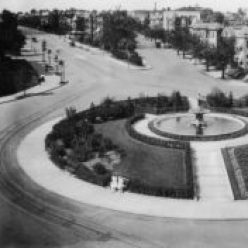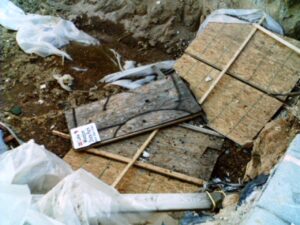Disclaimer- I’m not a parent so I know squat.
Disclaimer II- Catholic Schools mentioned.
Extra intro: I was looking for a book on DC private schools to go along with this posting but didn’t find it in the bookstore where I had last seen it (darned it someone bought it!) and I couldn’t remember the title or describe what it looked like so I couldn’t ask the nice people at the bookstore, lest I look like a complete idiot. I found something close “Georgia Irvin’s Guide to Schools: Metropolitan Washington Independent and Public/Pre-K-12” but it wasn’t the same book because the book I wanted had Immaculate Conception Catholic Church over on N St, by the Giant. Georgia Irvin didn’t have that. Doing a search with Amazon I found “Independent School Guide for Washington, D.C. and Surrounding Area” by Jill Zacharie and I think that is the book I wanted. Once I get my hands on it I will more than likely give it to Nathan, so he may do something on his blog.
In the last posting, I shared what I found in the book London Calling regarding the coping strategies of middle class parents in gentrifing neighborhoods. Their options were to move when their kids became school aged, do a bit of public primary schooling then switch to private or selective secondary schooling, or just opt out and go private school all the way.
Even if a school was in a good gentrifying neighborhood, parents would note that a number of kids attending came from other poorer neighborhoods. It was not so much the poverty that bugged parents but the school ethos, the environment for learning that was important to parents. The authors wrote that “…primary schools, particularly faith schools, have maintained what is seen as an acceptable normative atmosphere in relation to learning and behaviour.” (p. 141) Which takes me to the story of my associate….
Let’s call him Bob (names changed to protect the innocent, blah, blah, blah).
Bob lived in PG County with his wife and two children. When the first one entered school it was fine for kindergarten and the first grade. In the second grade he noticed that his daughter was repeating lessons she had learned in the first grade. Worried that she might have a learning problem he approached the teacher and found out that the whole class was repeating the lesson because not all the kids had caught up and his daughter was fine. Well this was unacceptable, because it was like going backwards. So he pulled his daughter out of public school and put her in Catholic school. At this point I should note that Bob is an atheist, but would have rather send his daughter to a religious school than keep her hindered in a public school. Telling me this he also described some of his values and beliefs regarding education. Like some of the parents in my part 1 segment, he was not thrilled about shelling out money for private school, because he said at the time he and his wife didn’t have a lot of money. But they valued a good education and they valued the arts, which meant they supplemented their kids’ arts education with piano lesson. [insert Bob’s tirade about lack of school funding for the arts]. Bob happlily told me that after putting two kids through Catholic school neither one of them is Catholic, or particularly religious for that matter. Bob also pointed out another virtue of the school, it was 1/2 black (music classes were also majority Asian) so it had the desired diversity along with that ethos. One kid grew up to be a local musician, the other just finished college.
I only bring up Catholic schools because they tend to be the cheapest of the private schools, not so much my own bias (I think, but I could be wrong). I realize that because of different factors Catholic schools are not an option for some households. Flipping through Georgia Irvin’s book on private schools in DC I saw that there is financial aid and some schools have a decent financial aid package to off set costs. But then again if parents have ideological objections to private school altogether then it doesn’t matter.
Ok, now tying this back to gentrification, middle class parents like Bob sometimes bite the bullet after giving the public schools a chance and go private. Yes, moving was an option. Bob had considered moving to MoCo or NoVa, but there was a strong tie to the area where he lived, a treasured babysitter. The parents in London Calling are tied to their neighborhoods because they highly value aspects of diverse city living over the comforts of homogeneous middle class areas with good schools.
Thinking back to earlier impressions of London Calling, there was also this thing of supplementing the kids’ education where the public system fell through. Part-time homeschooling? Or doing what Bob did, send the kids to music classes? The problem is still there with the ethos in the main school if kids make fun of you because you play the flute or piano.
Usually there is a hope that as more of the middle classes move back into DC the schools will get better. If London is an example, then that ain’t going to happen. In gentrifying neighborhoods the middle class is not the numerical majority. In their neighborhood schools they aren’t a big enough group to make much of a difference either.


